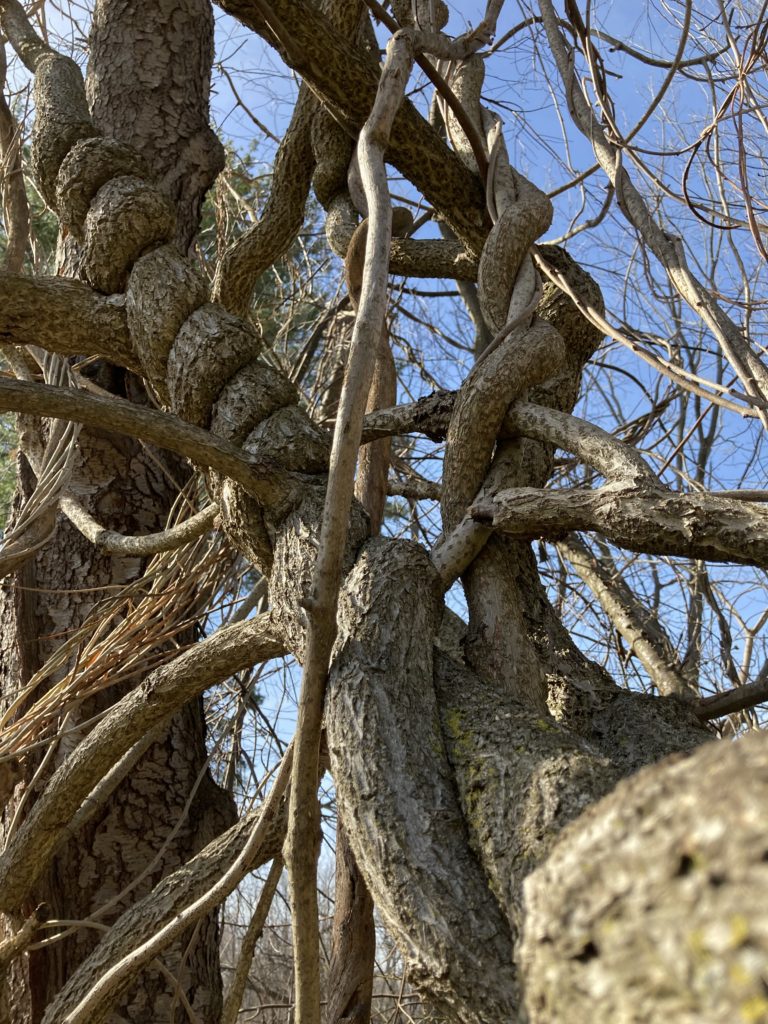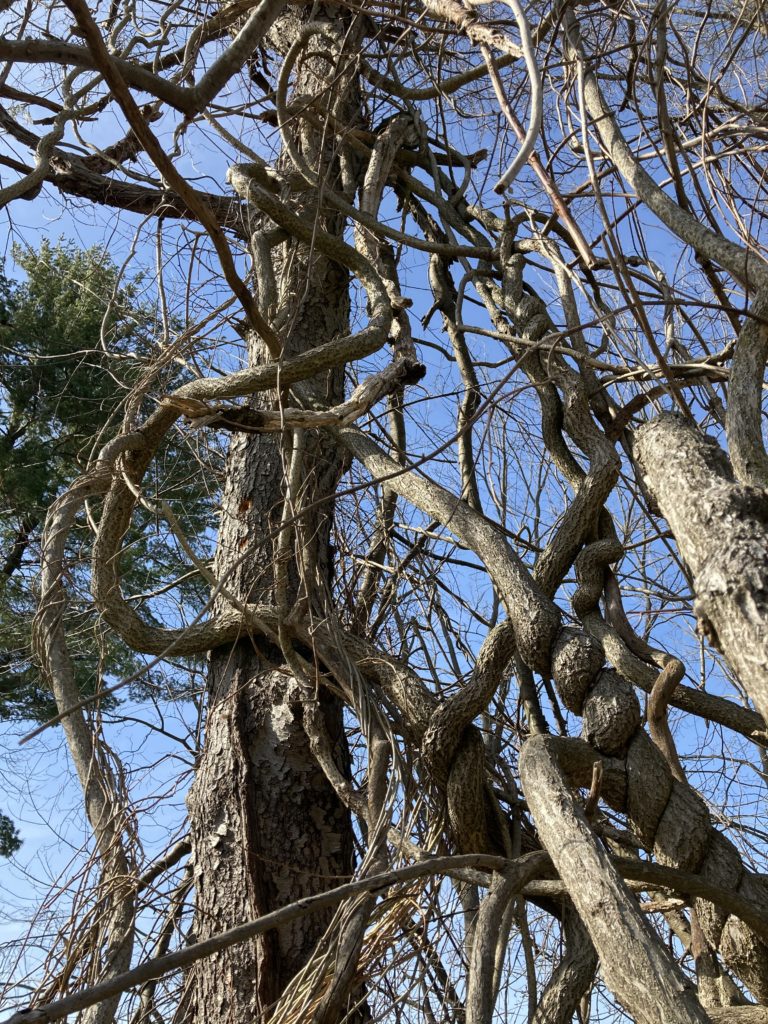Almanac: Botanical Boa Constrictor

Oriental Bittersweet. Photo: Stephen Braun
On a recent walk I came across a truly monstrous specimen of one of our most pernicious invasive species: oriental bittersweet. My photos don’t do this beast justice, but you can get a sense for how the thick, self-entwining vines have strangled and smothered the wild cherry tree that struggles for life underneath. It’s not surprising that bittersweet has been called a “botanical boa constrictor” and has been likened to the similarly invasive kudzu vine that has engulfed millions of acres in the south.
The thickest tentacles of this particular kraken are about 3 inches in diameter, which suggests it’s been growing for 15 to 20 years. If you cut an old bittersweet vine (and please do!) you’ll see rings, just like a tree. Bittersweet kills its hosts two ways: coiling around trunks and limbs, which constricts normal growth, and by adding weight and surface area to the canopy, which makes a tree more vulnerable during high winds and heavy snowfalls.
As hinted by its name, oriental bittersweet was introduced to North America in the 1870s from eastern Asia. It closely resembles the native species, Celastrus scandens, with which it readily hybridizes. A distinguishing characteristic of the plant, which can be helpful in identifying very young specimens, is that the roots are bright orange. The native bittersweet was given its name by early colonists because the fruits resembled those of common nightshade, which was also called bittersweet. Whether the berries actually taste both bitter and sweet is not something I’m going to explore since all parts of both the native and introduced species of bittersweet are reportedly poisonous.

The vine produces small green flowers that mature into red seeds encased in yellow pods that break open during autumn and are the reason the plant continues to be sold as an ornamental. A wide variety of birds eat the fruits and disperse the seeds widely in their excrement.
In an assessment of invasive species by the U.S. Forest Service, Connecticut had the highest density of oriental bittersweet infestation. Massachusetts was one of 5 eastern states with the second-highest density. That same survey found that bittersweet is the 11th most-common invasive across the entire northeast area surveyed. Multiflora rose (for which I have a particular enmity) topped that list.
Getting rid of bittersweet is not easy. Uprooting is best, but that only works for very young plants. For well-established vines such as the ones I observed, uprooting isn’t an option (unless you own a backhoe). If you find older bittersweet vines climbing up trees or buildings, a combination of cutting followed by application of concentrated systemic herbicide to the cut surfaces is likely to be the most effective approach. There are, as yet, no biological controls for this plant.
Systemic herbicides like triclopyr (e.g., Garlon 3A) and glyphosate (e.g., Roundup) are absorbed into plant tissues and carried to the roots, killing the entire plant in about a week. This method is most effective if the stems are first cut by hand and herbicide is applied immediately to cut stem tissue. Herbicide applications can be made any time of year as long as temperatures are above 55 or 60 degrees Fahrenheit for several days and rain is not expected for at least 24 hours. Fall and winter applications will avoid or minimize impacts to native plants and animals.
I have been trying to get rid of bittersweet from my yard for years, and have largely succeeded using only the identify-and-yank approach. But every year I find new seedlings, and sometimes larger vines growing in corners of my yard I don’t often frequent. It’s very satisfying to find these intruders and dispatch them. But as with most efforts to control Nature, I know I can only win temporarily. Bittersweet will win the war, but for the time being, I enjoy winning the battles.
Almanac is a regular Indy column of observations, musings, and occasional harangues related to the woods, waters, mountains, and skies of the Pioneer Valley. Stephen Braun has a background in natural resources conservation, which mostly means he is continually baffled by what he sees on explorations of local natural areas. Please feel free to comment on posts and add your own experiences or observations. You can also email at: braun.writer@gmail.com.
